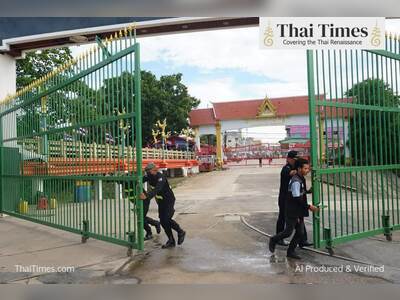Thailand's Egat to Transform Hydropower Dams into Energy Storage Systems
Major investment to enhance clean power supply with pumped storage hydropower technology
The Electricity Generating Authority of Thailand (Egat) plans to convert three hydropower dams into massive energy storage systems with a 90-billion-baht investment.
This effort aims to stabilize the clean energy supply, supplementing solar and wind power, which are subject to weather fluctuations.
Egat's feasibility study focuses on implementing pumped storage hydropower (PSH) technology at the dams.
Deputy Governor Tawatchai Sumranwanich explains that PSH involves two reservoirs at different elevations.
Water released from the upper reservoir generates electricity through turbines and is then collected in the lower reservoir.
It is later pumped back to the upper level during low-demand periods.
The initiative addresses the intermittent nature of solar and wind power by ensuring continuous electricity availability.
The power generation cost is relatively low, around two baht per kilowatt-hour.
The three targeted dams are the Chulabhorn dam in Chaiyaphum with an 801 MW capacity, the Vajiralongkorn dam in Kanchanaburi with 891 MW, and the Kathun dam in Nakhon Si Thammarat with 780 MW.
They are expected to commence operations in 2034, 2036, and 2037.
Progress has been made with the Chulabhorn dam, including an approved environmental impact assessment report.
Results from all studies will go to the Egat board and Energy Ministry to ensure compatibility with the 2024 power development plan.
Successful alignment will lead to further consultation with state agencies and submission to the cabinet for final approval.
Egat has already implemented PSH at Lamtakong Jolabha Vadhana dam in Nakhon Ratchasima, highlighting the organization's commitment to renewable energy expansion.
This effort aims to stabilize the clean energy supply, supplementing solar and wind power, which are subject to weather fluctuations.
Egat's feasibility study focuses on implementing pumped storage hydropower (PSH) technology at the dams.
Deputy Governor Tawatchai Sumranwanich explains that PSH involves two reservoirs at different elevations.
Water released from the upper reservoir generates electricity through turbines and is then collected in the lower reservoir.
It is later pumped back to the upper level during low-demand periods.
The initiative addresses the intermittent nature of solar and wind power by ensuring continuous electricity availability.
The power generation cost is relatively low, around two baht per kilowatt-hour.
The three targeted dams are the Chulabhorn dam in Chaiyaphum with an 801 MW capacity, the Vajiralongkorn dam in Kanchanaburi with 891 MW, and the Kathun dam in Nakhon Si Thammarat with 780 MW.
They are expected to commence operations in 2034, 2036, and 2037.
Progress has been made with the Chulabhorn dam, including an approved environmental impact assessment report.
Results from all studies will go to the Egat board and Energy Ministry to ensure compatibility with the 2024 power development plan.
Successful alignment will lead to further consultation with state agencies and submission to the cabinet for final approval.
Egat has already implemented PSH at Lamtakong Jolabha Vadhana dam in Nakhon Ratchasima, highlighting the organization's commitment to renewable energy expansion.











